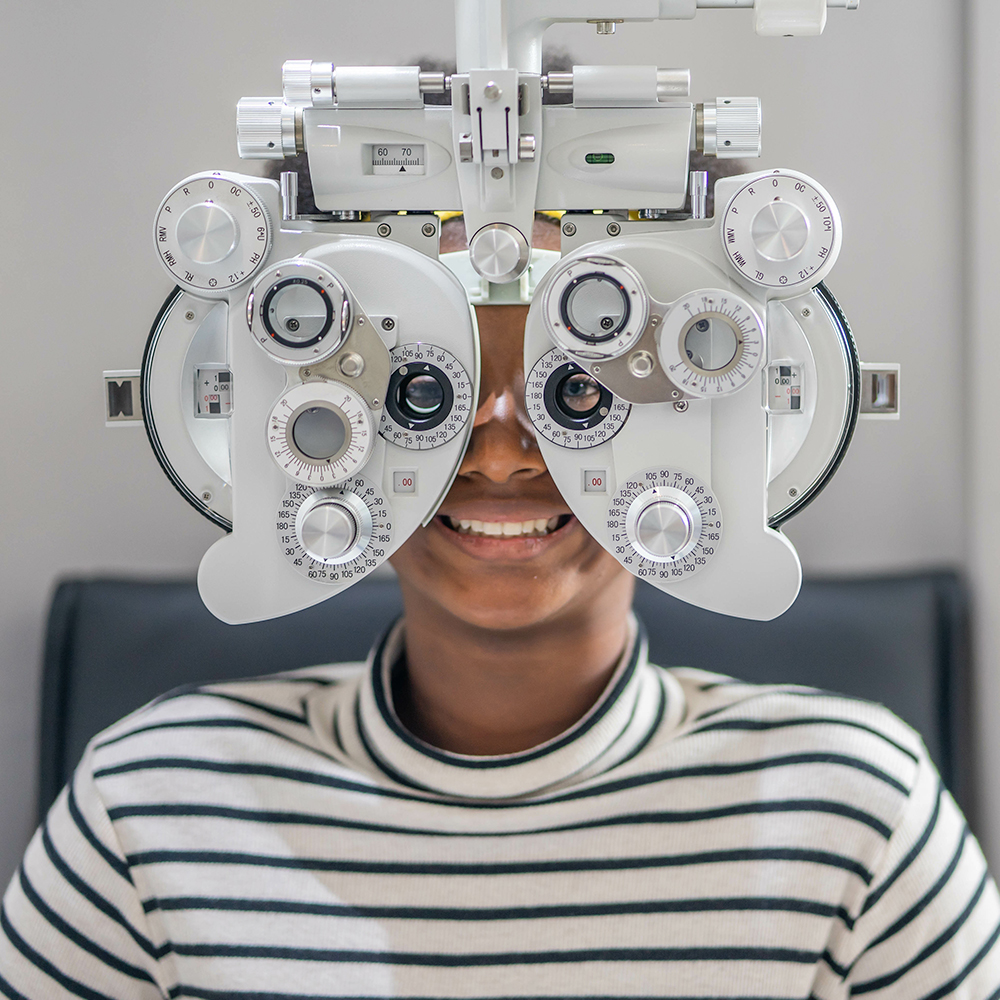Exploring the most recent Technological Advancements in Optometry and What They Mean for Eye Doctors
From the accuracy of Optical Coherence Tomography to the nuanced understandings used by AI-driven analysis devices, these developments are setting brand-new requirements in person assessment and treatment. As these developments penetrate the technique, optometrists are encountered with the obstacle of embracing these devices to boost client end results.
Innovations in Diagnostic Devices
Progressing the field of optometry, developments in diagnostic tools have revolutionized the way eye care specialists assess and identify eye conditions and aesthetic impairments. The past years has seen significant technical innovations, making it possible for even more extensive and precise evaluations.
Another trick innovation is the intro of advanced corneal topography systems, which map the surface area curvature of the cornea with precision. These tools are particularly useful for suitable contact lenses and detecting corneal conditions. Digital retinal imaging has changed typical ophthalmoscopy, providing comprehensive, scenic views of the retina that facilitate comprehensive visual examinations.
The development of wavefront aberrometry has actually also been essential, making it possible for the analysis of refractive mistakes with unmatched accuracy (Optometrist Chino). This technology helps in personalizing rehabilitative lenses and enhancing surgical outcomes for refractive surgical treatments. Collectively, these diagnostic innovations empower optometrists to provide remarkable patient care, ensuring very early treatment and customized therapy approaches, inevitably enhancing aesthetic wellness end results
AI in Patient Administration
Structure on the structure of sophisticated diagnostic devices, the unification of artificial knowledge (AI) in person monitoring represents a transformative jump for optometry. AI systems are progressively employed to improve efficiency, precision, and personalization in patient treatment.
Additionally, AI-driven platforms facilitate structured patient communications and administrative processes. Automated organizing, online assessments, and personalized follow-up strategies not just enhance client complete satisfaction however also enhance time management for practitioners. These systems can triage people based on the urgency of their problems, making certain that those in critical need receive punctual focus.
In addition, AI enhances decision-making by supplying eye doctors with evidence-based suggestions and therapy paths. By incorporating data from electronic health documents, AI tools supply insights that educate professional decisions, reducing the threat of errors and boosting person outcomes. As AI proceeds to develop, its duty in patient administration will likely broaden, improving the landscape of optometric treatment.
Developments in Retinal Imaging
In the realm of optometry, retinal imaging has actually seen impressive technological advancements that are improving analysis capacities and patient treatment. Technologies such as Optical Coherence Tomography (OCT) and fundus digital photography have revolutionized exactly how eye doctors picture and evaluate the retina.
Improved imaging methods like OCT angiography are more refining analysis precision. This non-invasive method maps blood flow in the retina, offering vital insights right into vascular wellness without the requirement for dye injections. Additionally, adaptive optics technology is being incorporated right into retinal imaging systems to deal with ocular aberrations, supplying unmatched image clarity. Such developments help with the identification of minute retinal changes that could signify condition development.
Furthermore, innovations in artificial intelligence are augmenting retinal imaging by making it possible for automated analysis of large datasets. These systems assist optometrists in recognizing patterns a sign of pathology, thereby boosting diagnostic accuracy and performance. Jointly, these technologies useful reference are transforming retinal imaging into a foundation of modern eye care, enhancing end results and expanding therapeutic opportunities.
Teleoptometry's Expanding Role
Teleoptometry is progressively ending up being a vital element of eye treatment, driven by developments in electronic communication and analysis tools. This is specifically helpful in underserved and country locations where accessibility to specialized eye care is often restricted.
The assimilation of expert system (AI) more boosts teleoptometry, allowing the evaluation of aesthetic data and aiding in the discovery of ocular problems such as glaucoma and diabetic person retinopathy. AI-powered algorithms can swiftly analyze intricate imaging information, giving optometrists with important understandings that strengthen professional decision-making.
Additionally, teleoptometry supports continuity of treatment through smooth combination with digital health and wellness Eye Doctor Optometrist documents (EHRs), enabling optometrists to keep detailed patient backgrounds. When consulting with different practitioners., this guarantees that people obtain personalized and consistent care also.
Regardless of these advantages, obstacles stay, consisting of making certain information protection and managing client expectations. Nonetheless, teleoptometry represents a significant stride towards more available, efficient, and patient-centered eye treatment. As modern technology evolves, its function is poised to increase better.

Future Patterns in Eye Care
A myriad of cutting-edge fads is established to improve the future of eye treatment, driven by technological improvements and the evolving needs of individuals. One significant pattern is the integration of expert system (AI) in diagnostics, which promises to boost the precision and efficiency of eye exams. AI algorithms can analyze substantial quantities of information from retinal photos, possibly spotting problems like diabetic person retinopathy and glaucoma earlier than traditional approaches.
Moreover, individualized medication is getting grip in optometry, with genetic screening informing personalized therapy plans. This approach aims to maximize patient outcomes by customizing interventions to individual genetic accounts. Wearable modern technology, such as wise call lenses, is likewise on the horizon, supplying real-time monitoring of intraocular stress or glucose degrees, therefore offering continuous insights right into ocular and systemic health.
The fostering of increased truth (AR) and online reality (VIRTUAL REALITY) in training and person education is an additional emerging pattern. These innovations offer immersive experiences that can improve understanding and skills both for people and eye doctors. As these trends advance, optometrists have to remain abreast of technical innovations to supply innovative care, ensuring better patient end results and fulfillment in the dynamic landscape of eye care.
Final Thought

Jointly, these analysis improvements equip optometrists to deliver exceptional client treatment, guaranteeing very early intervention and customized therapy approaches, inevitably improving aesthetic wellness outcomes.

As these technologies continue to advance, optometrists need to adapt and include them into practice, ultimately maximizing process performance and boosting the requirement of eye treatment delivered to clients.
 Brandy Then & Now!
Brandy Then & Now! Jurnee Smollett Then & Now!
Jurnee Smollett Then & Now! Erik von Detten Then & Now!
Erik von Detten Then & Now! Tyra Banks Then & Now!
Tyra Banks Then & Now! Pauley Perrette Then & Now!
Pauley Perrette Then & Now!